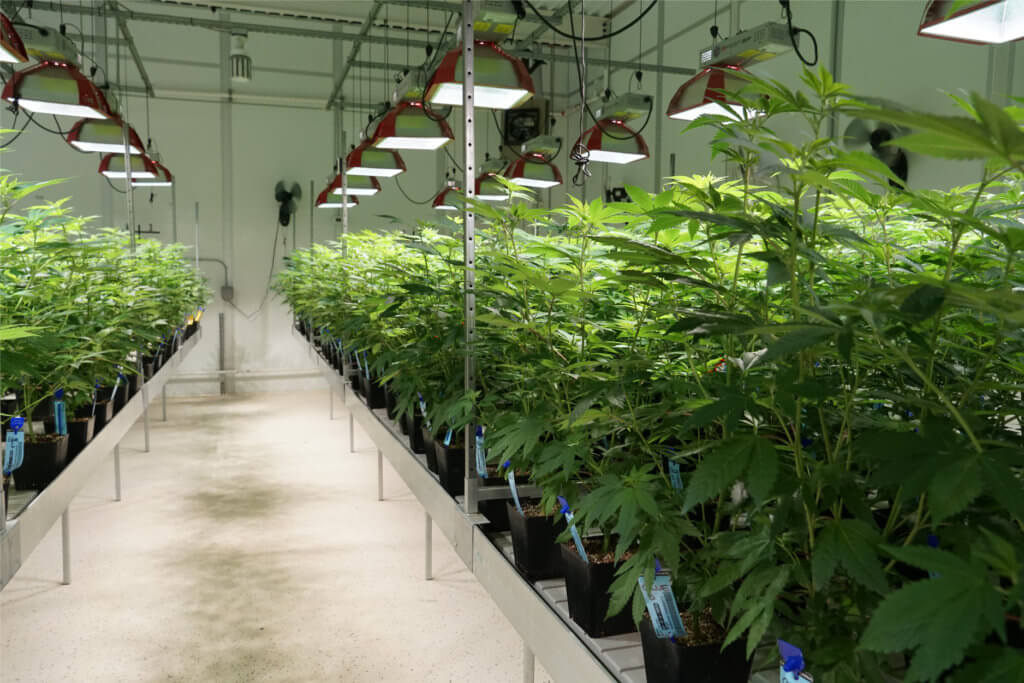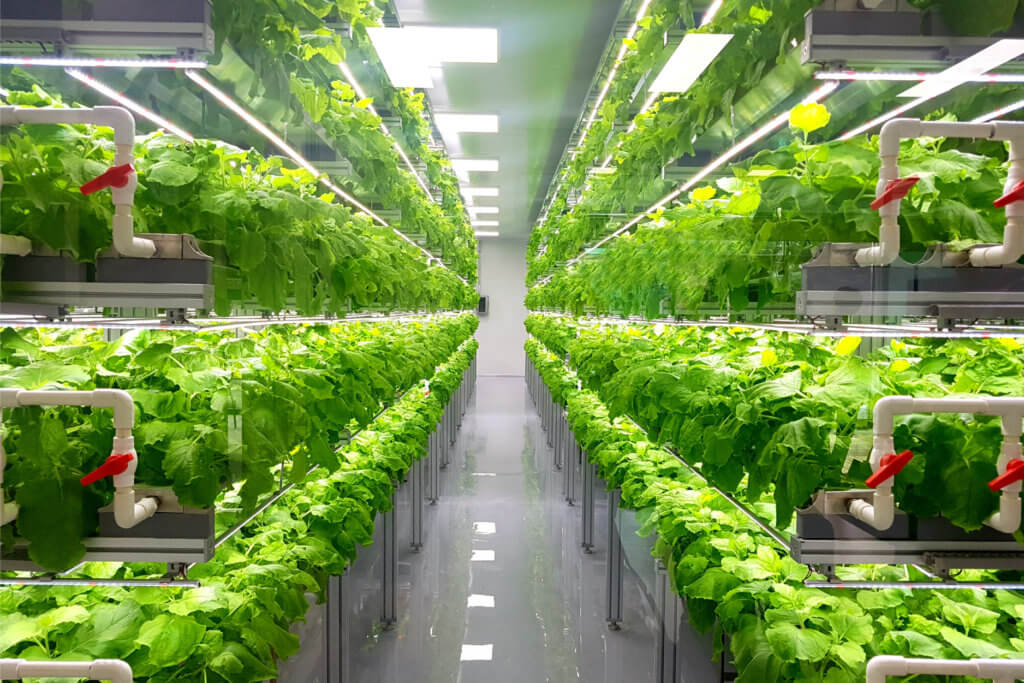
Indoor farms are a great way to grow plants in areas where it’s not possible or practical to do so outdoors. Fresh produce is almost universally imported from other areas, particularly in urban areas or geographies with short growing seasons–for instance, much of the produce in the US comes from Mexico or South America.
But why? Imagine eating locally grown, right off the vine tomatoes in New York City in January. Or freshly harvested, organic micro-greens in the Nevada desert.
With populations growing within urban areas, an increased focus on food security in the era of climate change, and the cost of preserving and shipping fresh produce over long distances, why aren’t there more vertical farms providing locally grown food to meet consumer demand? Several reasons include:
- Lack of knowledge about how to build them
- Inability to scale up quickly enough to provide local demand
- High capital investment required
- Access to utilities (water and power)
- A lack of understanding of what types of crops can be successfully produced indoors
But more and more people are beginning to take advantage of this market’s untapped potential. While vertical farming can be a lucrative and sustainable business, it is important that you start by becoming well-informed on the whole process to be successful. We’ll help get you started by covering the fundamentals of controlled environment agriculture (CEA).
Indoor Farming: Agriculture For the Modern World
The future of food production is not going to be in the fields, it’s going to be indoors. The effects of climate change are changing the way we have to look at food production–extreme weather events wrecking crops in traditional farming zones, extended droughts and wildfires, and scarcity of water resources are all game changers as it relates to traditional farming methods.
Our pollinators are in trouble. The pesticides and herbicides used in commercial agriculture are making us sick. Our waterways are polluted with run off from large scale commercial farms. And according to the Food and Agriculture Organization of the United Nations, 70% of the world’s freshwater withdrawals are used to support commercial farming activities. Traditional farming is not a sustainable practice over the long term, and cultivating food at the local level, in controlled environments, is the answer.
Indoor cultivation allows the cultivator to manipulate the environment to make it perfect for crops, regardless of the outdoor conditions, guaranteeing harvests year round and eliminating the risk of weather-related crop loss. Exposure to pests and pathogens are minimized, reducing or eliminating the need for pesticides and fungicides, and eliminating altogether the need for herbicidal treatment. Irrigation water can be reclaimed instead of ending up in our waterways, and moisture transpired from plants can be recaptured through dehumidification systems to make net water consumption near zero. Food security is greatly improved when food is cultivated locally, and food is tastier and healthier when it’s fresh and grown with a minimum of chemical intervention.
As the human population increases, and as land and water resources diminish, it’s hard to imagine a future where controlled environment agriculture isn’t a major factor in future farming activities.
What is the Difference Between Indoor Agriculture and Vertical Farming?
Commercial indoor cultivation refers to the growing of plants in a controlled environment, such as a sealed building or converted warehouse. Indoor farms imply the use of sealed grow rooms and artificial light, whereas greenhouse farms rely on natural light and typically bring in air directly from the outside for ventilation and climate control. While less energy-intensive than indoor farms, greenhouse cultivation doesn’t allow for condensate recapture and results in a less tightly controlled environment, and possibly more limitations on harvest quantity or crop type, as the ambient conditions have more of an impact than on a completely controlled indoor farm.
Vertical farms are a relatively new concept that has been gaining popularity over the past few years as more people become aware of how much land we use for agriculture today. The idea behind them is simple – take advantage of vertical space to either stack crops in layers, or grow on a vertical surface, to maximize the square footage of plant canopy that can fit within a given square footage of space. Vertical farms are a specific application of indoor agriculture which are already being used in several parts of the world, including the U.S. While all vertical farms are indoors (or in greenhouses), not all indoor or greenhouse farms are vertical.


How Much Does it Cost to Start an Indoor Farm and is it Profitable?
The total investment for this type of facility ranges greatly depending on a number of variables. Some of these include square footage, location and real estate, existing infrastructure, equipment selection, humidity and temperature parameters, water usage, and more. In general, an indoor farm will cost somewhere between $125-$350 per SF to construct, depending on the technologies selected and decisions around long term operating costs. Just like anything else, a larger upfront investment will typically pay for itself in the form of lower operating costs down the road.
All of these choices should be guided by your plants’ requirements and your unique business goals. For example, luxury or craft brands often require tighter controls over their environments and lighting schedules, and may opt for special grow mediums like hydroponics or organic soil. Larger facilities might take more of a mass production approach, focusing less on quality and more on volume. Well-funded groups will often choose both high volume and high quality production methodologies. There are also many growers who seek to implement farming technologies that will allow them to minimize their carbon footprint as part of their brand identity, or out of a desire to be a good citizen.
One drawback to indoor cultivation is the energy footprint associated with artificial lighting and climate control. For now, what that means is that the cost of food produced indoors is generally higher than the cost of traditionally grown foods, but as technologies improve efficiencies, and investments are made in onsite power generation and renewable energy resources, that paradigm should shift. The high value of cannabis generally means that indoor cannabis cultivators see a faster return on their investment than food cultivators. However, cannabis cultivators have a limited client base, while food producers have a built-in, long-term, guaranteed consumer, as their potential consumer is every human on the planet (or at least in their region).
No matter your goals, a carefully-planned, well-designed, and well-managed grow operation should ensure that you are both profitable and competitive.
Check out this 2-minute video on vertical grow room design considerations for more information:
What Crops Do Vertical Farms Grow?
The most broad answer is simple: a lot! While many indoor cultivators grow cannabis for medical or recreational use, the CEA market is rapidly expanding. And if we look at indoor farming without the vertical component, the list gets even longer.
Really, any fruit or vegetable whose bushes or vines are relatively compact can be successfully grown indoors, so the list is a lot shorter if we ask the question “what can’t be grown indoors.” Currently, the answer to that is mainly grains (except rice, which can be grown indoors) and fruit trees.
Here is a great breakdown by verticalfarming.com on which crops are most compatible with vertical farms:
While it is theoretically possible to grow any plant completely indoors, economic factors typically limit the realistic set of crops to those that have a small growing habit (for maximizing the number of plants that can be grown in a limited space), are prolific producers (e.g. tomatoes on the vine), or can be grown and sold rapidly (such as microgreens). Compatible crops for vertical agriculture include herbs, squash, lettuce, peppers, tomatoes, strawberries, mushrooms, cantaloupe, leafy greens, and more.
Building an Indoor Farm?
If you’re thinking about starting an indoor farm, there’s no need to start from scratch. You don’t necessarily need to build everything yourself; some companies offer turnkey solutions where they design the facility and install all of the equipment needed to get started right away. If you want to go this route, make sure you do your research before signing up. Some vendors sell systems that aren’t very efficient, and others charge exorbitant prices for poor performance. It pays to shop around until you find one that offers exactly what you need.
You’ll also likely want to consider how much time and money you plan to invest into building out your grow rooms. A large commercial facility has access to specialized tools and equipment not available to individual farmers, such as automated irrigation controllers, computerized temperature monitoring devices, and other automation technology. These features vary in price, however, so it is important to understand what the needs of your particular grow operation will be.
Surna Cultivation Technologies provides comprehensive facility design services, including architectural design, MEP engineering, HVAC systems, climate controls, lighting, benching, and more! With over 800 CEA projects completed, we have the knowledge and the technologies best suited to help you get growing.


